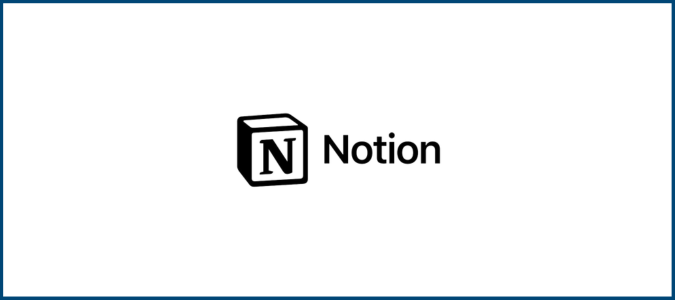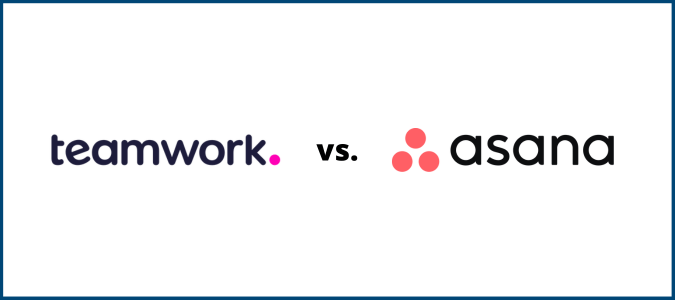Smartsheet and Wrike both provide robust project management tools but with unique functionalities that make them suited to different types of businesses. They each have powerful collaboration and enterprise-grade capabilities to make your team more efficient. We’ve looked at each company’s customization and automation tools, security, and growth potential to see how they can benefit your business over time.
Smartsheet brings advanced customization, analytics, and security to the table. It has enough functionality to support larger businesses and sophisticated tools to explore as you need them. Above all, it makes communication efficient between you and your team. Try Smartsheet free for 30 days.
Wrike is built to last and grow with your business. It offers excellent communication features, but it truly shines with its real-time automation and department-oriented project management tools that help you centralize everything. Try Wrike’s Business plan free for 14 days.

Smartsheet and Wrike Compared to the Best Project Management Software
Smartsheet and Wrike are just two options to help you organize your workflow and keep your projects running like a well-oiled machine. Smartsheet made our list of the best project management software as a flexible option with powerful customization features to tailor your project management to your team. While Wrike didn’t make our list, it is still a good tool to consider. Here are three top-notch options in the project management space:
Monday.com is the best project management software for most people, with its exceptional collaboration tools and intuitive onboarding. Try any plan free for 14 days.
ClickUp works best for remote teams with a dashboard that shows everything in one place and allows unlimited free viewers. Get ClickUp for free.
Teamwork is good for users who do client-based work with its invoicing capabilities and roles for clients and contractors. Try Teamwork free for 30 days.
Smartsheet Compared to Wrike
Both Smartsheet and Wrike have excellent project management capabilities. Smartsheet’s scalable solutions and user-driven collaborative tools make it versatile for businesses that use spreadsheets. Wrike allows for flexibility across business types and benefits marketing and creative teams the most.
Smartsheet Highlights
Broadly, Smartsheet is a project management platform, but it has some impressive capabilities and tools to benefit your business. It features many in-depth tools for collaboration, including automated alerts, feedback capabilities, and reports to keep everyone on schedule and involved.
Its automation tools cut down on repetitive manual tasks, so your team can focus on more important tasks. It lets you communicate within the platform to keep as many functions in one place as possible, which helps when you’ve got a remote team or a big collaborative project. You can even create documents and collaborate on projects in the platform—a feature many other project management solutions don’t have.
Its resource management tools make it easy to keep track of budgets, track time, and see your team’s performance metrics. Filters and formulas give you relevant information at your fingertips, and the platform’s work insights show you how you can make your workflow more efficient. It even highlights areas where you can use Smartsheet to reduce bottlenecks and build a more productive team.
Wrike Highlights
Wrike has tools and features for initiating projects, structuring workflow, and collaborating. With it, you can create workspaces with projects, folders, tasks, and subtasks to organize everything. Its templates and blueprints give you the building blocks you need to start your project on a solid foundation.
Agile workflows, roles, time tracking, and effort management let you structure your workflow in the best way for your team to ensure everyone has a manageable workload. It prevents teammates from getting overwhelmed and ensures everyone is on task, while collaborative tools like document editing, cross-tagging, and approval features keep everyone in the loop.
Wrike also provides an array of insights, like marketing analyses and real-time reports to show marketing teams how customers respond to their campaigns and how teams can change their approach. It integrates with over 400 applications, including HubSpot, Zoom, and Slack, to broaden its capabilities, and it can create access roles for clarity and to keep everyone focused.
Smartsheet vs. Wrike: Pros and Cons
We dug into the best and worst of Smartsheet and Wrike to show you how each solution can benefit your business and why it may not be the right fit. Here’s what we found by comparing different features and tools across each brand and holding it up against our top picks.
Where Smartsheet Shines
Customization Features: Smartsheet’s biggest draw is its flexibility. Its sheets allow for advanced project management and can accommodate any role, niche, or industry. The platform can keep track of your budget, organize tasks with agile project management tools like Gantt charts, track projects and productivity, support marketing campaigns, and manage customer relationships. Because the software can do so much in one place, it can even cut down on costs for your business.
Advanced Analytics and Reporting: Smartsheet can create reports to show you exactly what you need to know to boost team efficiency for successful projects. You can schedule and generate reports as needed and use them to identify trends and problems that cause bottlenecks or drops in productivity. The platform lets you manage analytics and reports across sheets and share them with team members and stakeholders. Smartsheet also updates every version of your reports in real-time so that everyone has the most current version of each report.

Extensive Automation Tools: You can free up more of your team’s time with automation tools. Smartsheet has more advanced automation tools than most project management software, including Wrike. Its drag-and-drop automation builder lets you create rules and conditions to improve your workflow in minutes with easy updates. Smartsheet sends you alerts, approvals, and other notifications to ensure everything gets done on time, and you can even tailor your automations to your industry or department.
Convenient Templates: With over 350 templates to start structuring your workflow, you have something for every project, including work sprints, agile project management, use case templates, project categories, and industries. You can customize your template to your needs from a basic layout, so you don’t have to build from the ground up. We’ve also counted Smartsheet’s templates among the best in the project management industry.
Enterprise-Level Security: Smartsheet’s security goes beyond what most project management solutions offer. It boasts a long list of features, starting with two-factor authentication, SSO, and AES 256-bit encryption. It has secure data centers and is compliant with HIPAA, ISO, GDPR, ITAR, SOC, and FERPA. This level of security means that you can use it safely even in the most confidential industries and departments since it protects not only your team’s information but that of your clients, patients, customers, stakeholders, and anyone else involved in the workings of your project.
Where Smartsheet Needs Improvement
Learning Curve: If you’re looking for a quick solution, Smartsheet may not be for you. It’s set up differently than most project management software, which means learning to use it to its full capacity takes time. It can confuse people who have never used anything like it before, so consider how much time you can put into learning it and whether you’re willing to commit to a steeper learning curve.
Add-Ons Required for Some Features: If you want to use time tracking and resource management tools with Smartsheet, you’ll need to sign up for its separate Resource Management platform. Since Smartsheet isn’t the cheapest option out there, it can deter some people when they find out they have to pay more for something that other solutions automatically include in their plans.

Expensive Compared to Other Solutions: With all it offers, it’s no surprise that Smartsheet costs more than other project management solutions. It starts at $7 per user per month for up to 10 users. The Business plan costs $25 per user per month, but with a three-user minimum, you won’t get away with paying less than $75 for advanced features. Smartsheet has a free plan, but it only allows for one user and doesn’t come with many of the features you’ll need for a more impactful project management solution.
Incompatible with Some Agile Methods: Smartsheet focuses on spreadsheets, meaning other methodologies, like Kanban boards, fall to the wayside. It still has plenty of functionality without them, but many teams like having these organizational tools, and going without them can mean you have to restructure processes or combine Smartsheet with another solution.
Where Wrike Shines
Supports Business Growth: With Wrike’s enterprise functionality, it comes with built-in features that you usually have to pay extra for, like time tracking. Its cross-tagging feature lets you collaborate in one area, and you have room to grow with features you can integrate over time as you learn them and your needs change. Plus, the platform’s AI functions help you organize, make decisions, find problems in your workflow, and work from anywhere.
Real-Time Analytics and Updates: With Wrike, you can not only choose the analytics you use but see updates on them every 15 minutes. They keep everyone informed, so you don’t need to refresh the page or send out new reports after you previously “finalized” and shared them. This reduces risk to your team and keeps everyone in the loop. They can see the project status, team performance, project status, and workload, keeping everyone connected and organized. It also prevents team members from getting overwhelmed and shows where the project is progressing and where it’s stalled.

Department-Oriented Project Management Tools: Wrike brings separate departments together by giving them specific solutions designed in the same place. It works for IT, HR, marketing, creatives, and more, and it integrates with software like Jira and GitHub so that everyone can communicate. With tools that suit various departments, Wrike creates visibility at every step of the process.
High-Quality Collaborative Features: Wrike lets you invite anyone involved in your project to collaborate on it, including clients and vendors, for free. It comes equipped with cross-tagging, live document editing, proofing, and approvals for team members and guests, plus the ability to request external collaboration if not everyone uses Wrike. Wrike’s real-time updates and reports centralize communication, and the platform has Kanban boards, which Smartsheet doesn’t.
Workflow Automation: Wrike has over 400 third-party tools and gives you 100 automations with your account. You can do automatic approvals and create conditional rules with up to 10 automations in one workflow. The platform lets you sync related tasks and move work based on various criteria, including priority and risk. The Automation Engine reduces errors and notifies you of your task status.
Where Wrike Needs Improvement
Hard to Navigate: Wrike’s advanced tools and capabilities mean that onboarding can get confusing and take some extra time. It may work out fine if you’re used to a similar interface, but you’ll likely need to use Wrike’s training tools. They can help you get started, but it’s not ideal when you want a simple solution.
Feature Availability: Wrike has a lot of features, but you can only get some of them with more expensive plans. For example, Gantt charts only come with paid plans, and you can’t get time tracking with the free or Team plans.

Difficult Mobile Management: Wrike’s mobile apps are available for iOS and Android, but they aren’t very user-friendly. Wrike sometimes doesn’t let you manage your tasks on mobile at all, which is inconvenient when so many business owners need to manage on the go. Having your project management platform cut off when you step away from your desk drastically lowers your efficiency and the time you can spend improving workflow.
Costly Services: Wrike is even more expensive than Smartsheet, and while it has advanced tools, it may be over many business owners’ budgets. There’s a free version with basic features, but the Team plan starts at $9.80 per user per month for a minimum of two users. The Business plan jumps to $24.80 per user per month with a minimum of five users.
The Last Word on Smartsheet Compared to Wrike
Smartsheet and Wrike both provide solid project management solutions with collaborative features that make your workflow easier. Their powerful tools and features for automating workflow, communicating with team members, and growing your business promote efficiency and work across industries.
Smartsheet offers a spreadsheet-based tool to boost productivity and help you manage your projects effectively, while Wrike is a more cross-departmental solution.
Smartsheet’s customization makes it one of the most versatile solutions, and its abundant templates get you set up faster, which helps, given that it takes time to learn. Meanwhile, Wrike’s enterprise functionality works to grow your business, and its collaboration features are convenient. However, its mobile app leaves something to be desired and can get in the way of managing your projects outside the office.
Explore more options for tracking your tasks and connecting your team members with our review of the best project management software.















